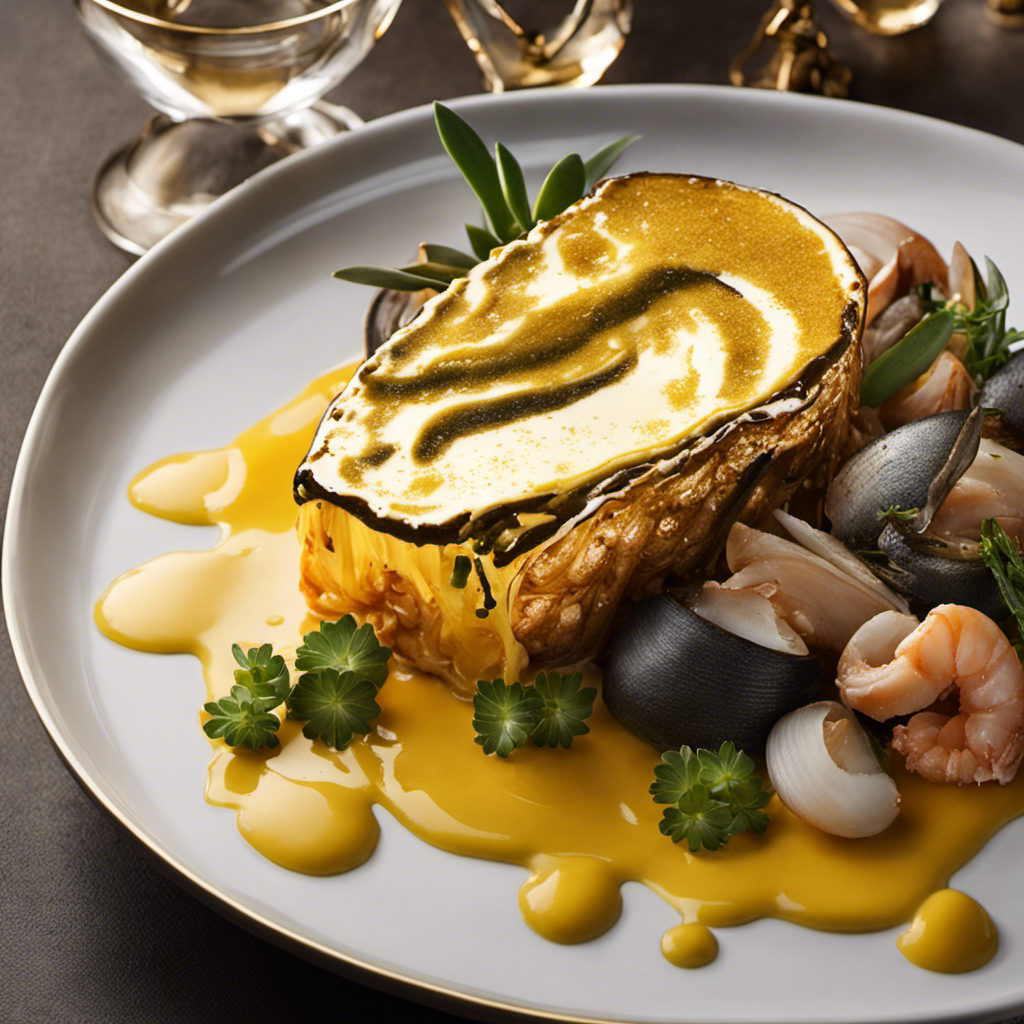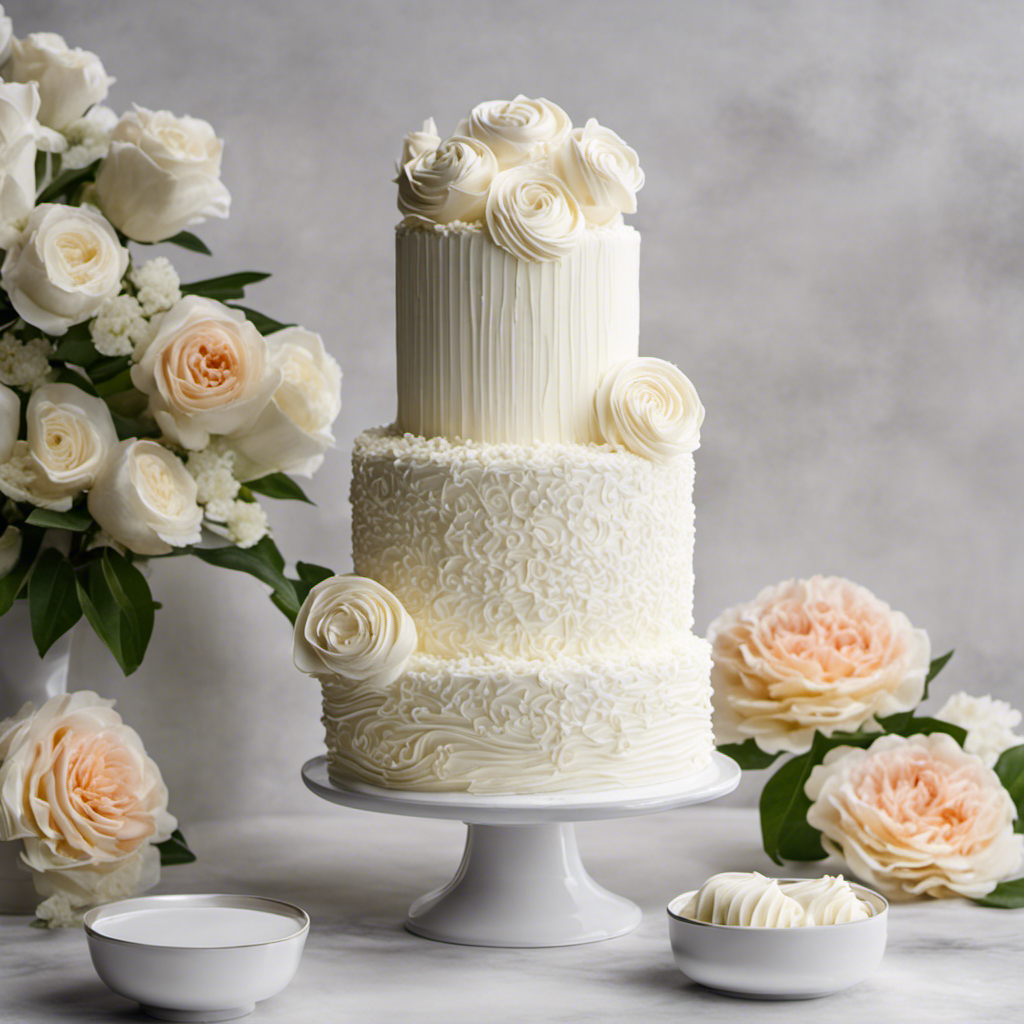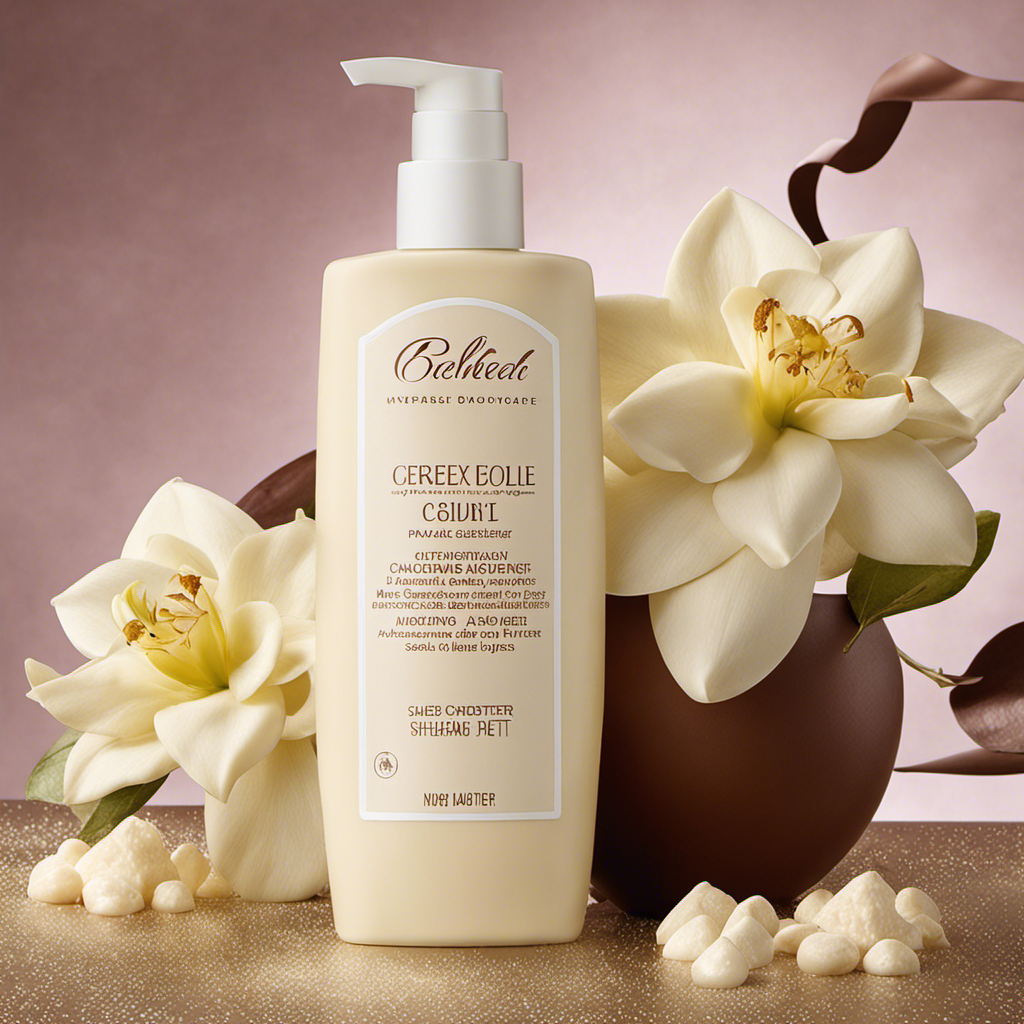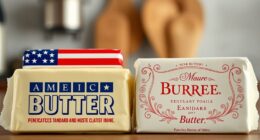I have always been a firm believer that adding a touch of butter makes everything taste better. That’s why learning how to make butter-flavored oil was a total game-changer for me in the kitchen!
In this article, I’ll guide you through the simple process of infusing your favorite oil with that rich, creamy buttery taste. With just a few ingredients and some easy steps, you’ll have a versatile and delicious condiment ready to enhance your dishes.
Get ready to elevate your cooking with homemade butter flavored oil!
Key Takeaways
- Select the right oil for making butter flavored oil
- Infuse the oil with butter flavor for a rich and creamy taste
- Choose the best butter for infusion to enhance the flavor
- Strain and store the butter flavored oil properly to maintain its quality and shelf life
Selecting the Right Oil
When selecting the right oil for making butter flavored oil, it’s important to consider the smoke point. Choosing the right oil can greatly impact the taste and quality of your final product.
I recommend experimenting with different oils to find the one that best suits your preferences. Oils with a high smoke point, such as avocado oil or refined coconut oil, are ideal for making butter flavored oil as they can withstand high heat without burning or producing a strong odor. These oils provide a neutral base that allows the butter flavor to shine through.
Now that you know the importance of selecting the right oil, let’s move on to the next step: infusing the oil with butter flavor.
Infusing the Oil With Butter Flavor
To infuse the oil with a delicious buttery flavor, start by melting butter in a saucepan. Once the butter has melted completely, add your chosen oil to the saucepan. The heat from the melted butter will help infuse the oil with its rich and savory flavor.
If you’re looking for butter flavor alternatives, you can also use vegan butter or butter extract to achieve a similar taste.
The benefits of using butter flavored oil are numerous. It not only adds a delightful taste to your dishes, but also brings a smooth and creamy texture. Additionally, butter flavored oil is a healthier alternative to using actual butter, as it contains fewer calories and less saturated fat.
Choosing the Best Butter for Infusion
One option is to use vegan butter as a substitute for achieving that delicious buttery flavor when infusing the oil. Vegan butter is made from plant-based oils, such as coconut or almond oil, and is free from any animal products. It is a great choice for those who follow a vegan or dairy-free diet.
When choosing the right butter for infusion, there are a few factors to consider:
-
Flavor: Experiment with different types of vegan butter to find the one that best matches the flavor you desire. Some may have a stronger buttery taste, while others may have a more subtle flavor.
-
Ingredients: Look for a vegan butter that is made from high-quality, natural ingredients, without any artificial additives or preservatives.
-
Texture: Consider the texture of the vegan butter, as it can affect the overall consistency of the infused oil.
-
Shelf Life: Check the expiration date and storage recommendations to ensure the vegan butter stays fresh for a longer period of time.
Preparing the Ingredients
To prepare the ingredients, you’ll want to gather all the necessary items before you begin. When it comes to flavor infusion, there are different methods you can try.
One popular method is infusing oil with herbs and spices. Experimenting with different herb and spice combinations allows you to create unique and delicious flavors. Start by selecting your favorite herbs and spices, such as rosemary, thyme, garlic, or chili flakes.
Next, gather a high-quality oil, like olive or sunflower oil, and a clean glass jar with a tight-fitting lid. Wash and dry the herbs and spices, then add them to the jar. Pour the oil over the herbs and spices, making sure they are completely submerged.
Close the lid tightly and let the mixture sit for at least 24 hours to infuse the flavors. After that, strain the oil to remove any solids, and your homemade flavored oil is ready to use!
Infusing the Oil and Butter Mixture
Once the herbs and spices have been added to the jar, pour the oil over them and ensure they are completely submerged. This is a crucial step in infusing the oil with the flavors of the herbs and spices.
To create a harmonious blend of flavors, consider experimenting with different infusing techniques and flavor combinations. Here are some ideas to get you started:
- Classic Italian: Basil, oregano, rosemary, and garlic.
- Asian Fusion: Ginger, lemongrass, cilantro, and chili flakes.
- Mediterranean Delight: Thyme, marjoram, lemon zest, and black pepper.
- Savory Herb Garden: Sage, parsley, chives, and dill.
By combining different herbs and spices, you can create unique and delicious flavor profiles in your infused oil. Remember to let the oil infuse for at least a week to allow the flavors to develop fully.
Use your infused butter flavored oil to enhance the taste of your dishes, whether it’s drizzling over roasted vegetables, marinating meat, or simply dipping bread.
Enjoy the process of experimenting with different flavors and infusing techniques to create your own signature butter flavored oil.
Straining and Storing the Butter Flavored Oil
After infusing the oil with herbs and spices, strain the mixture to remove any solids and transfer it to a clean, airtight container for storage. Straining the butter flavored oil is an essential step to ensure a smooth and flavorful end product.
There are a few different straining techniques you can use, depending on your preference and the tools you have on hand. One popular method is to line a fine-mesh strainer with cheesecloth and pour the oil through it, catching any solids in the cloth. Another option is to use a coffee filter or a paper towel placed inside a funnel to strain the oil. Whichever method you choose, be sure to press the solids gently to extract as much flavor as possible.
Once strained, the butter flavored oil should be stored in a clean, airtight container to preserve its freshness and flavor. Make sure the container is completely dry to prevent any moisture from spoiling the oil.
Now that we have our butter flavored oil ready, let’s move on to some tips and variations for using it in our recipes.
Tips and Variations for Using Butter Flavored Oil
When using butter flavored oil in your recipes, remember to adjust the amount of salt you add, as the oil already contains some.
Butter flavored oil is a great substitute for butter in baking and cooking. It provides the rich, creamy taste of butter without the cholesterol and saturated fat.
Here are some benefits of using butter flavored oil in your recipes:
-
Healthier option: Butter flavored oil is lower in fat and calories compared to butter, making it a healthier choice for those watching their intake.
-
Easy to use: Butter flavored oil can be used in the same way as regular oil or melted butter, making it convenient and versatile.
-
Enhanced flavor: The buttery taste of the oil adds a delicious flavor to your dishes, enhancing their overall taste and appeal.
-
Longer shelf life: Butter flavored oil has a longer shelf life compared to butter, allowing you to keep it on hand for longer periods without worrying about spoilage.
Incorporating butter flavored oil into your baking and cooking can bring numerous benefits, from healthier options to enhanced flavors. Give it a try and see how it elevates your recipes.
Frequently Asked Questions
Can I Use Any Type of Oil for Making Butter Flavored Oil?
Yes, you can use different types of oil for making butter flavored oil. However, some oils may work better than others in infusing the butter flavor. It’s important to choose a neutral-flavored oil to let the butter flavor shine through.
Can I Use Margarine Instead of Butter for Infusing the Oil?
Using margarine instead of butter for infusing oil has pros and cons. Margarine can alter the flavor of the infused oil, giving it a different taste. It’s important to consider personal preference and desired outcome when making this substitution.
How Long Can I Store the Butter Flavored Oil?
When it comes to long term storage of butter flavored oil, it’s important to follow best storage practices. This ensures the oil stays fresh and flavorful. Be sure to store it in a cool, dark place to maintain its quality.
Can I Use Dried Herbs for Adding Additional Flavor to the Oil?
Sure, you can use dried herbs to add flavor to your oil, but using fresh herbs will give you a more vibrant taste. There are various methods for infusing oil with herbs, like heat infusion or cold infusion.
Can I Use the Leftover Strained Butter for Other Recipes?
Yes, you can definitely use the leftover strained butter in baking or other recipes. It adds a rich, buttery flavor that enhances the taste of your dishes. Get creative and explore different ways to incorporate it into your cooking!
Conclusion
In conclusion, making butter flavored oil is a simple process that can elevate your cooking to new levels of flavor. By infusing your chosen oil with the rich taste of butter, you can add a deliciously decadent touch to your dishes.
For example, imagine drizzling this oil over freshly popped popcorn, creating a movie night snack that is both buttery and aromatic.
With a little creativity and experimentation, the possibilities for using butter flavored oil are endless. So why not give it a try and elevate your culinary creations today?









